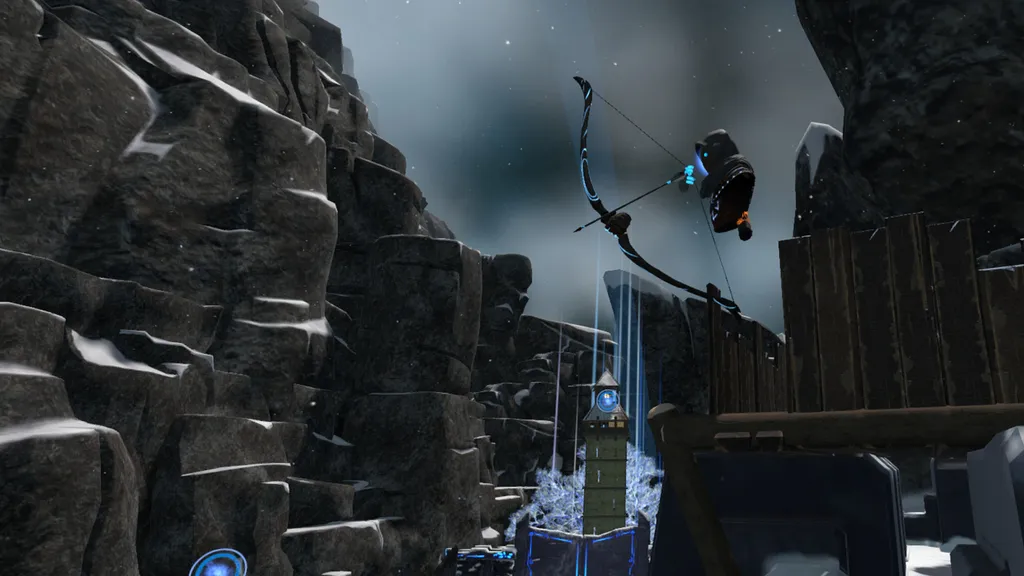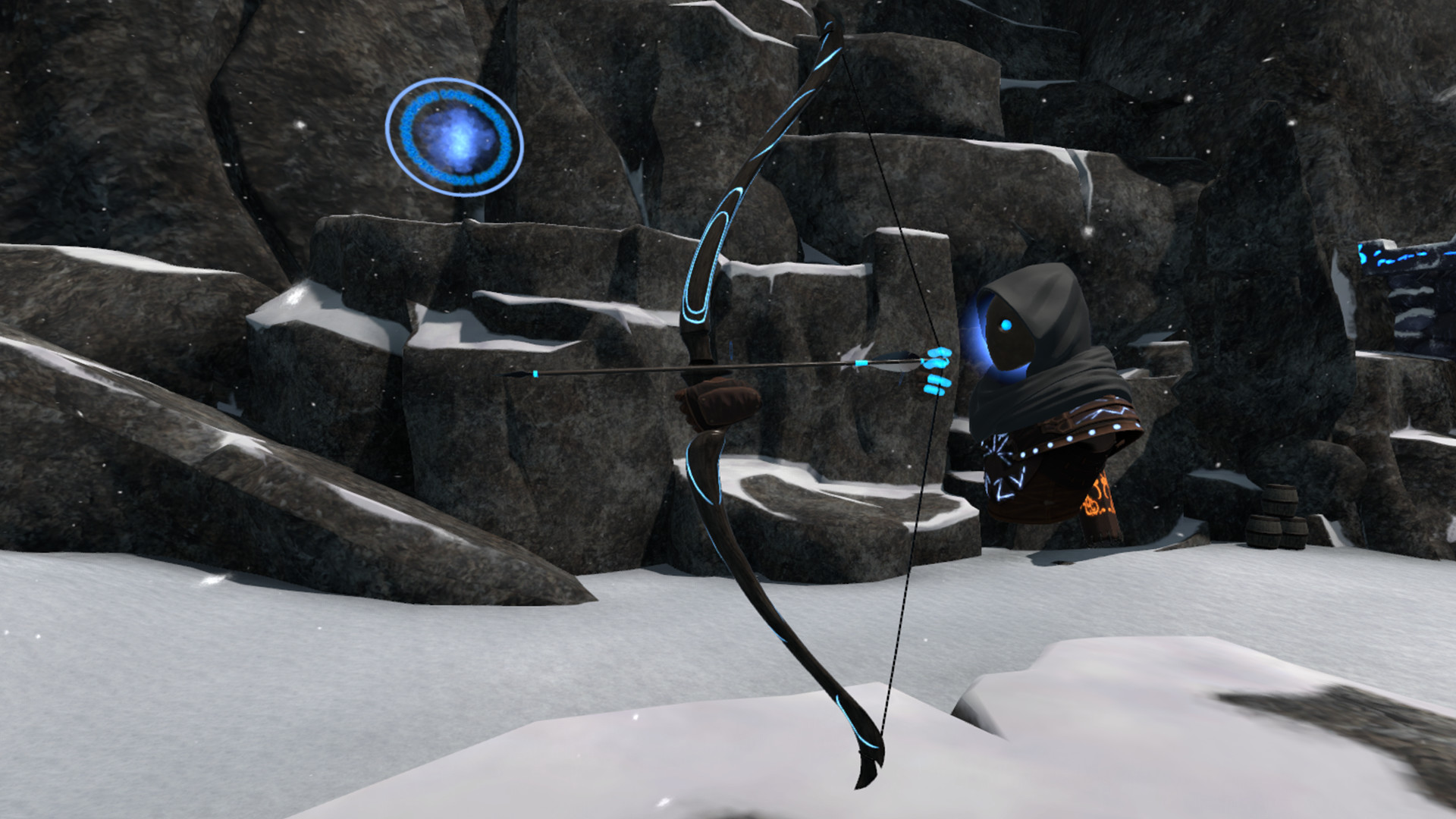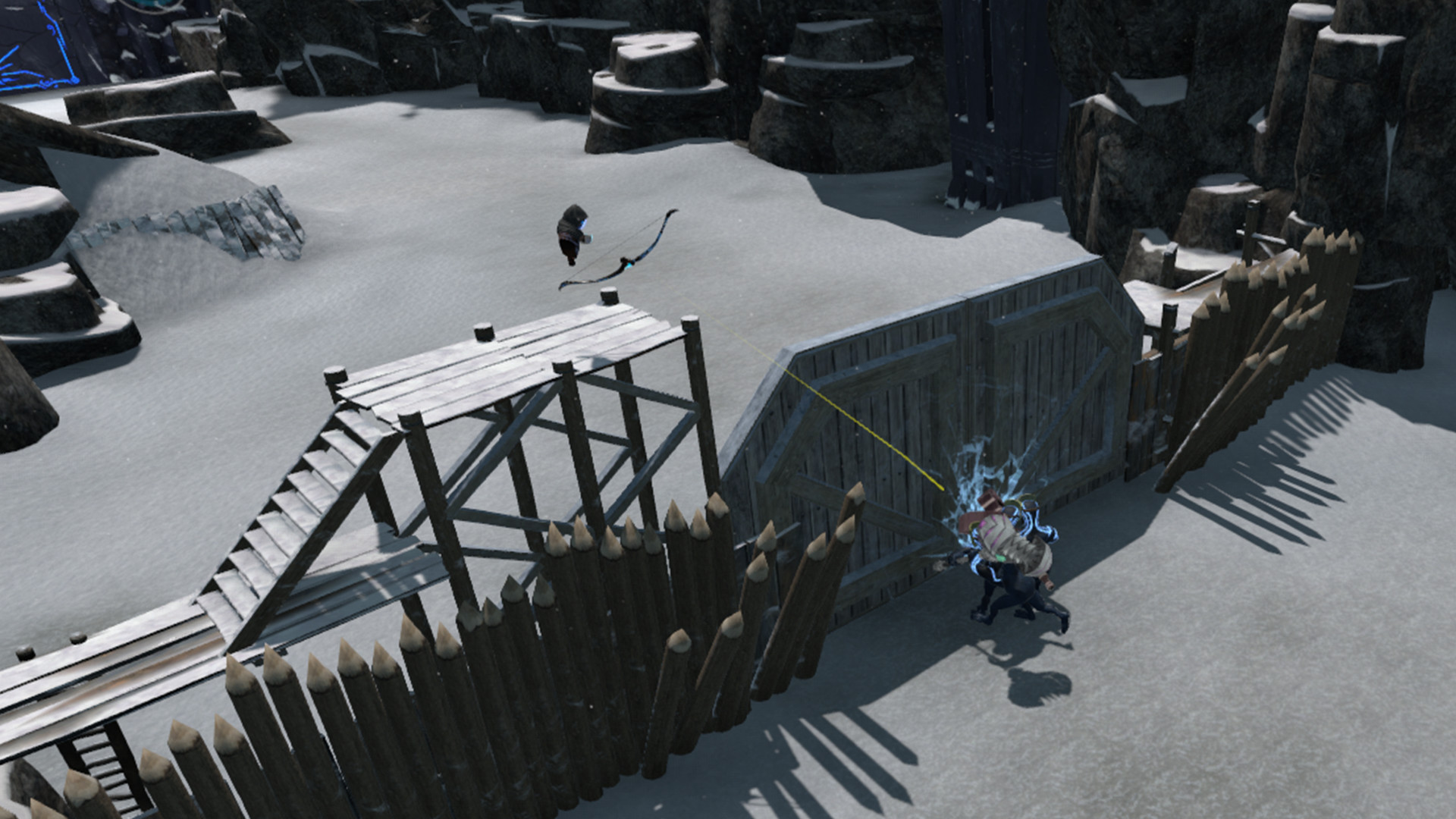Anyone that’s tried The Lab, the free mini-game collection from Valve that’s available on Steam, knows that Longbow is one of the standout experiences. Standing atop a castle wall, you shoot down wave after wave of little stick figures as they go running by. Some of them wear armor to take more hits as the number of enemies slowly grows over the course of the waves.
The mechanics are fluid and easy to pick up and learn with enough finesse to feel just about as accurate as the real thing. The only problem is that it’s a single map, it’s dead simple, and it lacks gameplay diversity. That’s where QuiVr, from Blueteak, comes in.
https://www.youtube.com/watch?v=9e0d0rbdZ_s
QuiVr first hit the scene several months ago as a free alpha demo. You could take on some waves of enemies and engage in some simple multiplayer, there were a few points to move around the map, but that’s all that it really offered. Now in Early Access, the list of features is much longer. For starters, the play space is dramatically increased which not only adds to the variation in strategies, enemies, and overall gameplay, but also adds to the amount of space you have to defend.
Since enemies still descend upon you in waves, it’s important to be aware of your surroundings. You’ll have to fight them back as they progress while also moving up in the world to secure new gates and push back the flood of enemies. In this way it feels like part wave shooter, part tower defense game, with a unique combination of elements. That should help fend off the VR users that commonly cry out in contention of games being “just another wave shooter”.
The archery motion of grabbing an arrow, docking it, and pulling back the bow string is addictive and natural. Over time, you’ll get into a rhythm and it feels amazing to learn the trajectory of your shots. Early Access has also added lite progression elements between both single and mutliplayer, allowing you to earn new customization options and small abilities throughout the waves.
Blueteak even posted a link to a full, 5,000+ word game design document right on the Steam page. Additionally, the game receives so many updates that if you go a day or two without checking in on progress, you’ll probably have missed something. I’ve frankly never seen a developer post so many updates with such consistent frequency. When a user complained about being harassed in an online game, the team was very quick to respond.
The community has responded to these efforts and the Early Access version of the game sports a “Very Positive” designation on Steam, with only 2 of its 54 reviews listed as negative. According to the content of the Steam reviews, online comments, and gamers in general, it seems as if a lot of the people that are paying for Early Access now have previously played the free Alpha demo beforehand. With QuiVr, Blueteak is demonstrating that the concept of making a good product, listening to your fans, and communicating with the public is a solid way of honing in on what people want.
QuiVr is one of the most promising VR games we’ve seen emerge in Early Access thus far. By staying open and communicative with the fans, Blueteak is a prime example of how to do this style of modern indie game development correctly. Instead of nickel-and-diming users for small additions, or exploiting a new industry full of naive consumers, the developers are instituting meaty updates and waited to charge players until they had a product that was actually worth paying for.
If you’re interested in being a part of QuiVr’s development as it evolves through Early Access, you can buy into the experience on Steam right now for $19.99 with a 20% discount until 1/2/16, bringing the price down to $15.99. It currently features official support for both HTC Vive and Oculus Rift in standing and room-scale configurations with motion controllers being required.




























